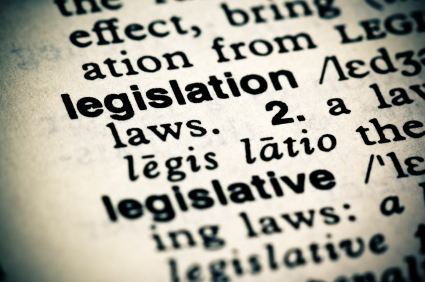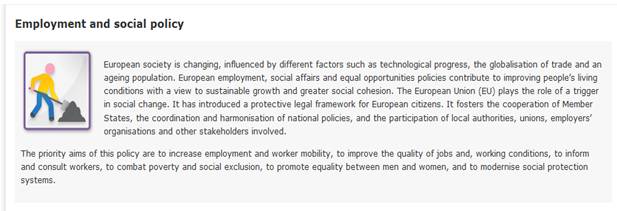Legislation on employment rights
 Almost all areas of business are affected by laws and regulations. Employment legislation covers significant areas of business behaviour, with laws focusing on:
Almost all areas of business are affected by laws and regulations. Employment legislation covers significant areas of business behaviour, with laws focusing on:
- Employment protection, including laws on equal pay and discrimination on the grounds of sex, religion, disability, race, ethnicity and age
- Health and Safety at work
- Minimum wage
What is the impact of such laws on different types of business? It could be argued that multinational companies are less affected by national legislation, because they can avoid some of the consequences by changing location or by lobbying governments to change the laws they dislike. This is not the whole story, however, because many employment laws are aimed at larger corporations and, indeed, have exemptions for smaller businesses.
Laws and regulations inevitably add to the cost base of a firm, and potentially make it less competitive, if other firms in the market place are not obliged to follow similar practices. One way of avoiding these costs is to outsource production or functions to countries where protection is more limited and costs are lower, and then ignoring unethical practices that take place. A number of major multinational corporations have been accused in recent times of doing exactly this, although accusations are normally strenuously denied, or the firms claim they were unaware of breaches and took immediate action when these were brought to their attention. Recent examples have been in the clothing and sportswear industries where companies such as Nike and Puma have been accused of condoning sweatshop operations in their Asian suppliers.
1. Anti-discrimination legislation
Many countries have labour laws which make a range of discriminatory behaviour illegal.
Sex discrimination laws
Sex discrimination laws outlaw discriminatory practices relating to recruitment and selection, promotion and dismissal. Falling foul of these laws can prove very expensive as well as damaging the reputation of the firm with potential employees and in the marketplace.
Two recent examples are the huge US retail giant Wal-Mart and the Swiss pharmaceutical company Novartis AG. Both have been accused of gender bias. Both face potentially massive damages if found guilty of discrimination reported to be $175million for Novartis, and billions of dollars for Wal-Mart


You can read detailed articles about these cases in the window below
- Novartis in $175 million gender bias settlement
- Lawsuit exposes Wal-Mart to billions in potential damages
A news report on the Wal-Mart Employment Discrimination Suit can be seen in the window below or accessed through the link above:

Employment Rights Question
Analyse the impact on Wal-Mart and Novartis of legal employment rights.
Equal Pay legislation
Equal pay legislation states that both males and females should be paid the same rate when they do work deemed to be of equal value. The European Equal Pay Directive says:
"The principle of equal pay entails, for the same work or for work to which equal value is attributed, the elimination of all discrimination on grounds of sex with regard to all aspects and conditions of remuneration. Where a job classification system is used for determining pay, it must be based on the same criteria for both men and women."

Europa employment rights
Racial discrimination legislation
Legislation in many countries prohibits racial discrimination in employment, education, health, social protection and access to goods and services.
Disability and Age Discrimination protection
Laws on discrimination based on age and disability in the areas of employment, self-employment, and 'occupation' are patchy and less widespread than some other discrimination provision. There are additional costs on firms to provide reasonable accommodation and access for disabled people. Laws on age discrimination are being examined in the context of increasing retirement age and pension provision.
2. Health and Safety at Work
Maintaining a safe working environment and safe working practices and ensuring that employees' health is not detrimentally affected by their work is a statutory duty on organisations in most developed and newly industrialised countries. Both employers and employees have responsibilities to provide safe conditions at work. Laws cover areas such as:
- Safety equipment and clothing
- Fire procedures and escape routes
- Provision of adequate toilet and washing facilities
- Maintenance of facilities and equipment
- Adequate lighting and control of temperature
- Training to support the implementation of written policies
- Handling, transport and use of dangerous substances
- Space requirements
- Logging of accidents at work
The implementation of processes and procedures to comply with legislation can be very expensive, as can the training and risk assessment required. However, safe firms avoid possible damages claims for accidents and may have reduced sickness and absenteeism.
3. National Minimum Wages
There is considerable argument among economists as to the impact of an imposed national minimum wage. Free market economists argue that wages should be determined by the laws of demand for, and supply of, labour. Minimum wages invariably add to the costs of a business and commentators argue it can lead to unemployment as firms are forced to lay-off employees they can no longer afford. What is most important is the level of the minimum wage and how it relates to the natural market rate. If minimum wage is much higher than the market rate, it is likely to affect business profits significantly. However, there is little solid data that proves that setting of minimum wages in the US and Europe has had a negative impact on employment, possibly because the wage levels set are relatively low compared to average wage levels.
As of 2010 the federal minimum wage in the United States was $7.25 per hour. Some states, such as California, have minimum wages higher than this (see List of U.S. minimum wages per state), and some U.S. territories and types of labour are exempt. In addition, some counties and/or cities within the US states observe a higher minimum wage than the rest of the state in which they are located.
Australia and New Zealand have long histories of establishing minimum wage rates. A 2005 study found that the Australian federal minimum wage was 58% of the average wage, compared to 45% in the UK and 34% in the U.S.
Currently all European countries have some regulation to determine a minimum wage floor. A statutory minimum wage applies to 20 out of 27 EU member states, while in the remaining seven countries minimum wages are determined by collective agreements.
There are large differences in the value of the minimum wages ranging from less than one euro per hour in Bulgaria and Romania to more than nine euros in Luxembourg. While this partly reflects the different costs of living in the various EU countries, there are also significant differences in the value of the national minimum wage in relation to the national wage structure. Minimum wages in Europe vary between 30% and 50% of the respective average wage.
Germany, Europe's largest economy, has no statutory minimum wage. The DGB trade union is lobbying the German government to introduce national minimum wage legislation. Chancellor Angela Merkel's conservatives have resisted the pressure, arguing it would drive some employers out of business and destroy jobs. However, the government has approved the introduction of minimum wages for a certain sectors of the economy.


Global minimum wage rates
You may be interested in the range of minimum wages across the world. You can investigate further by reading the following list of minimum wages per country.

Minimum Wage
Lawmakers in Hong Kong are debating if the city should institute its first-ever minimum wage. Most other parts of the world, including mainland China, have enacted laws requiring companies pay employees above a certain amount on an hourly, daily or monthly basis.
However, despite calls dating from more than a decade ago to establish a minimum wage, Hong Kong still has no pay floor. Union activists want the equivalent of US$4.25 an hour, needed to offset the high cost of living in the territory. This would result in an estimated 17% of Hong Kong's workers getting a pay increase. Business leaders are arguing for a much lower rate of about US$3. In Hong Kong, US$4.25 will buy a bowl of shrimp noodle soup or a cup of coffee at Starbucks.
Watch the video Hong Kong's minimum wage rate debate . You can do this in the window below or follow the previous link to read the article in a separate window) and then consider answers to the questions below.

Question 1
Define the term 'minimum wage'
Question 2
Analyse the advantages and disadvantages for Hong Kong of setting a minimum wage of $4.25.
Question 3
To what extent do you believe the government should influence the setting of wage levels in the private sector.